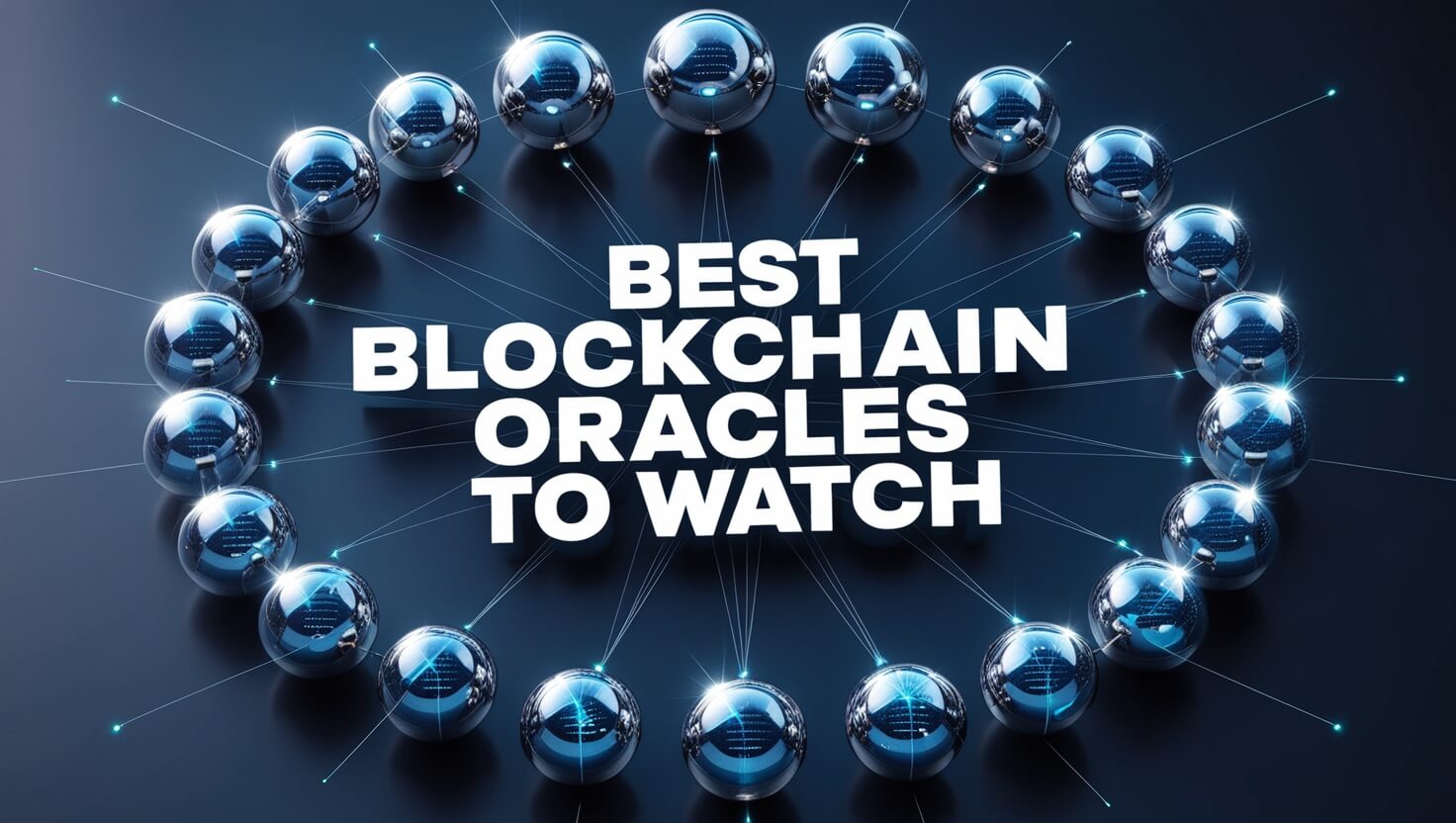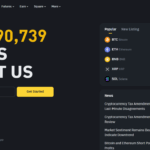Here is the article on the Best Blockchain Oracles To Watch. Blockchain oracles help link real world data to blockchain applications, meaning they are very important.
Some of the oracles in this genre are rather brilliant as they have features and capabilities that further enhance the accuracy, security and efficiency of data delivery to smart contracts, and hence, are critical for the growth of the blockchain world.
Key Features & Best Blockchain Oracles to Watch
| Oracle Network | Key Features |
|---|---|
| Chainlink (LINK) | Leading decentralized oracle network providing secure and reliable real-world data to smart contracts. Strong partnerships and wide adoption in DeFi and traditional industries. |
| Pyth Network (PYTH) | Specializes in high-quality, real-time financial market data sourced from top financial institutions, primarily serving DeFi applications. |
| Band Protocol (BAND) | A decentralized oracle using a delegated proof-of-stake model with cross-chain compatibility for multiple blockchain ecosystems. |
| API3 (API3) | Connects traditional APIs directly to the blockchain without intermediaries, enhancing reliability and security. API providers operate their own nodes. |
| Universal Market Access (UMA) | Focuses on synthetic financial contracts, enabling tokenized versions of real-world assets for decentralized finance applications. |
| Tellor (TRB) | A secure, decentralized oracle solution that relies on a network of miners for data verification, widely used in DeFi. |
| Decentralized Information Asset (DIA) | Multi-chain oracle network offering highly customizable data feeds across Ethereum, Solana, and Polygon for various applications. |
| Nest Protocol | Uses a unique consensus algorithm to improve data accuracy and reliability, with an open-source, community-driven model. |
| iExec RLC | Provides a decentralized marketplace for computing resources, allowing Web2 applications to integrate with Web3 ecosystems. |
1. Chainlink (LINK)
Chainlink is considered one of the best oracle decentralized networks because of its security and solid structure. It links smart contracts to real world data with a network of independent nodes.
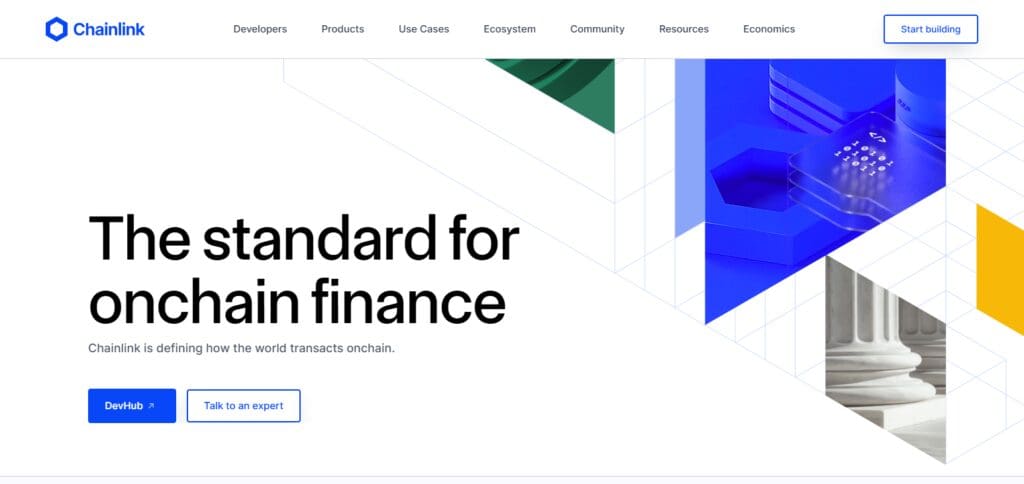
Chainlink’s collaborations with DeFi and other traditional established businesses have made it an oracle solution leader. Node operators who ensure data accuracy are compensated through the LINK token.
With the expansion of Chainlink’s use in the market, node operators are compensated through LINK tokens. In addition to data delivery, Chainlink’s decentralized architecture performs a wide range of sophisticated actions, which improves accuracy.
Chainlink (LINK)
Pros:
- Extremely secure and popularly used in the blockchain world.
- Has strong ties with numerous DeFi projects and enterprises.
- He is capable of performing sophisticated processes, not just providing simple data feeds.
Cons:
- For new users, having diverse functions may make it difficult to use.
- Worries regarding the centralization of node operator still exist.
2. Tellor (TRB)
Tellor provides a decentralized oracle that focuses on security and reliability by enabling miners to use a proprietary multi-source approach to confirm and submit data.
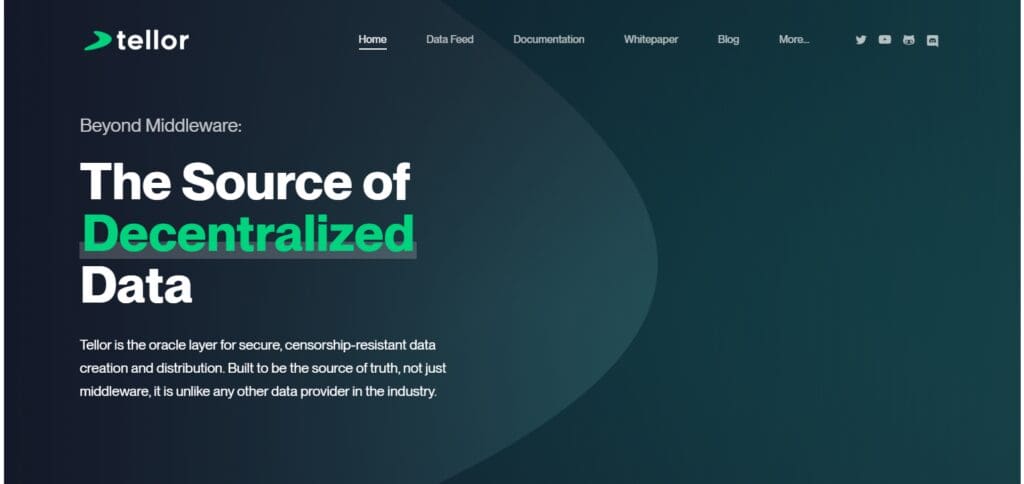
To the network’s primary token TRB, data feeds are paid for, governance is done, and the network is protected via staking.
Tellor’s technology can be useful to projects in DeFi that require reliable data feeds due to its oriented security model, Even though Tellor has great appeal in the ease of acquiring data, it’s heavily favored among users who actively need reliable data sources; however, this approach in focus over wider aspect of economy mi
Pyth Network (PYTH)
Pros
- Delivers top-notch data from financial markets as and when required.
- Data is collected from leading financial organizations.
- Designed specifically for DeFi applications which require precise market data.
Cons
- Cannot meet the broader need, as it only caters to finance applications.
- Working on gaining increased acceptance outside the finance sector.
3. Pyth Network (PYTH)
Blockchain applications are now able to source real-time high-quality financial market data from Pyth Network. This data is of the highest quality as it is sourced from leading financial institutions.
This is especially important due to the increasing demand for accurate financial data in the decentralized finance market.

Pyth Network’s strong partnerships with key players in the finance industry make them an effective provider of market data.
While they don’t have the coverage of data for non-financial applications, they definitely have a stronghold in DeFi market for providing accurate financial data.
Band Protocol (BAND)
Pros:
- Supports operations on multiple blockchains making integration cross-line simpler.
- Incorporates delegated proof-of-stake (DPOS) model which increases speed and reduces cost.
- More affordable and faster than certain rivals.
Cons:
- The ecosystem is broader than Band Protocol’s, however, it has chained blocks.
- Limited reach due to absence of many integrations and partnerships.
4. API3 (API3)
Increasing the reliability of APIs and Blockchain applications has now been achieved with the connecting bridge provided by API3. API providers are now able to connect through the blockchain directly, which ensures reliability and low failure points.
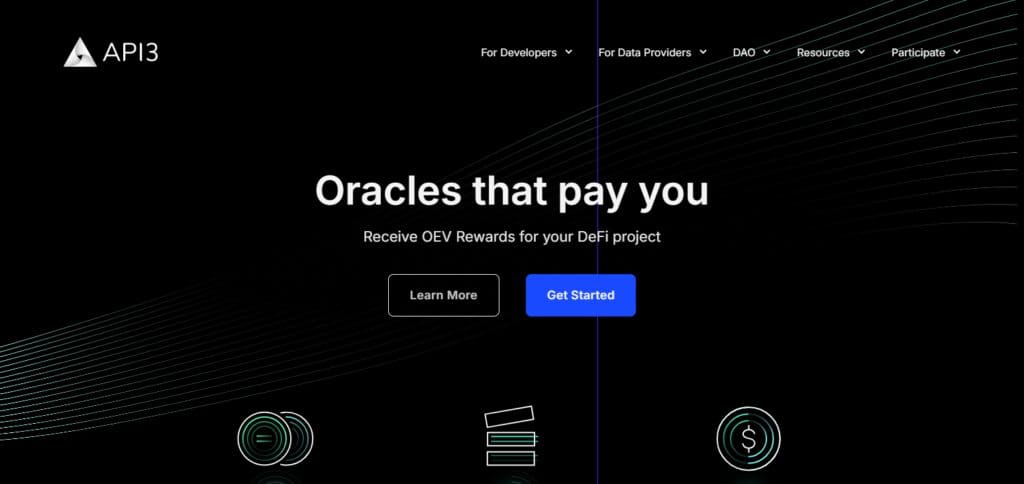
The community can now make decisions through API3 tokens for governance, enabling a more optimized structure.API3 provides its users with greater control over data accessibility and security by allowing API providers to administrate their nodes.
Because of this, API3 has a strong position in the oracle market as an API to blockchain integration provider, although it may face hurdles concerning acceptance due to being relatively new to the space.
API3 (API3)
Pros:
- Eliminates the need of third parties by connecting APIs directly to the blockchain.
- Stated API providers can operate their own nodes which bolster security and control.
- Enables community driven governance through API3 tokens.
Cons:
- Adoption is slow because the product is still in the early stages.
- Competes against Oracle Networks like Chainlink with established reputations.
5. Universal Market Access (UMA)
UMA focuses on tokenized synthetic financial contracts and real world assets on the Ethereum blockchain. Owing to tokenization, users can invest into them without owning them.
The platform is governed by the UMA token which participants stake and receive rewards for good governance.
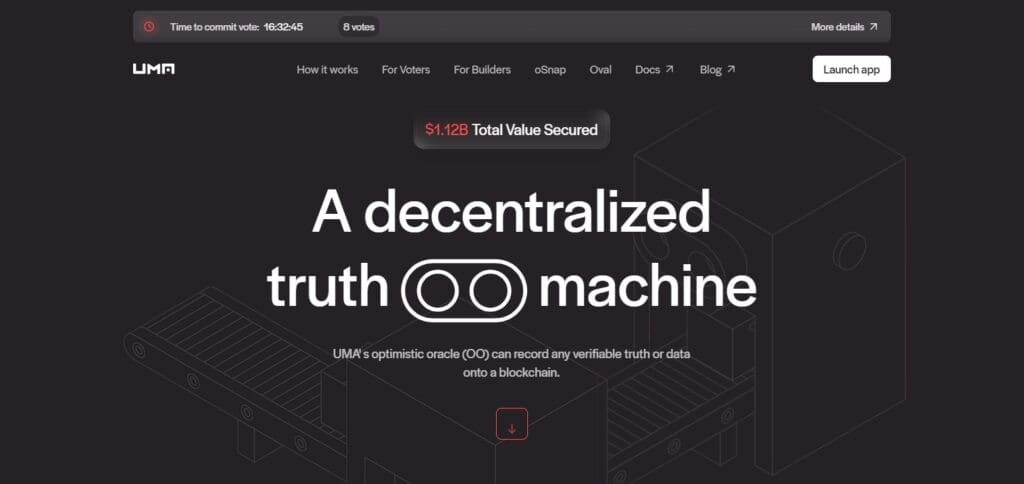
As projects in DeFi seek to develop replicas of financial assets common in traditional finance, UMA’s decentralized approach position synthetic assets for broad use.
Its emphasis on community and market diversity makes it particularly attractive to those who specialize in sophisticated financial and derivative contracts.
Universal Market Access (UMA)
Pros
- The platform has a focus on synthetic built financial contracts, which expand access to the DeFi space.
- Empowers users to fabricate tokenized replicas of real world properties.
- Improvement in decentralized governance and staking enhances platform security.
Cons
- Has value mainly for people who understand complicated financial tools.
- There’s minimal application outside of their proprietary synthetic asset building.
6. Band Protocol (BAND)
Band Protocol offers a scalable and flexible decentralized oracle system using a delegated proof of stake consensus mechanism which enables fast and reliable data transmission to smart contracts.
The BAND token serves as a governance and security token whereby validators stake BAND tokens to secure data feeds.
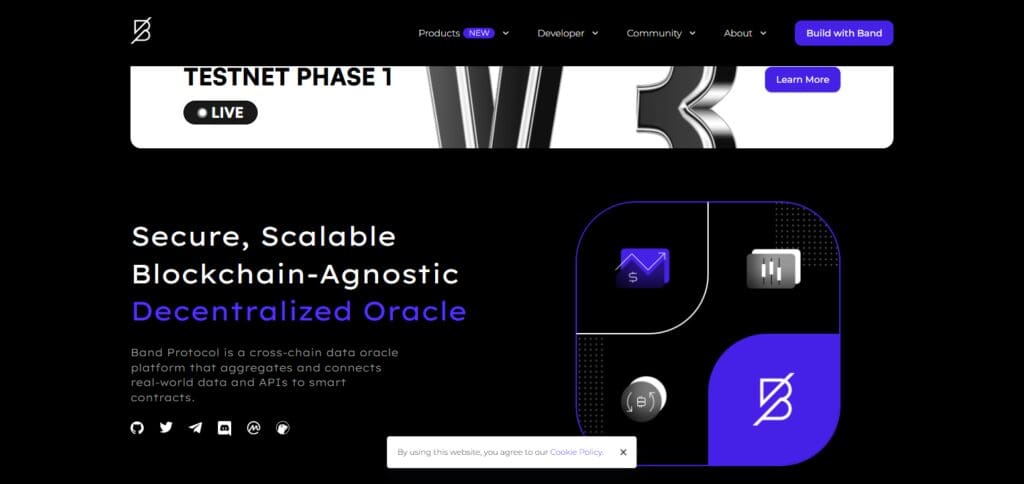
Band Protocol has always been able to adapt well to a multitude of ecosystems due to its unique cross-chain data sharing features.
This makes Band Protocol an adaptable choice for many blockchain projects.
Tellor (TRB)
Pros
- Complete decentralized solution for Oracles with a solid security framework.
- Eliminates middlemen through data verification based on mining.
- Credible for DeFi operations that need high quality data inputs.
Cons
- Primarily focused on DeFi and agricultural technologies, which hinders adoption in other sectors.
- Time lags as a result of data submission and dispute resolution are possible.
7. Decentralized Information Assets (DIA)
As DIA it is known, uses multi chain oracle technology to provide numerous global region oriented data feeds for different Ethereum and Solana based Chains ecosystem Solana as well as Polygon so users have ease while accessing it.
In addition, Steth’s provider who offers flexible application for enhanced business opportunities makes data selection for things such as asset price and NFTs much broader than that offered.
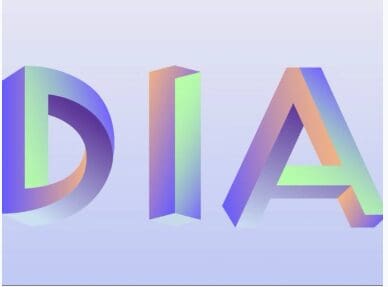
Dia’s elevated emphasis on extensibility is useful for many useful businesses that totally need additional services. The community controlled structure is certainly good for business alongside its ability to pipe numerous system chains.
However, field specialists that lack experience in oracles will undoubtedly have a hard time comprehending the customization process and its possible instantiation options.
Decentralized Information Asset (DIA)
Pros
- Multi chain compatible oracle supporting Solana, Ethereum, and Polygon.
- Provides robust and programmable data feeds that suit different needs.
- Increased transparency through community driven governance.
Cons
- Lack of extensive customization options may be a downside for novice users.
- Adoption is low compared to top providers of oracle technology like Chainlink.
8. Nest Protocol
Instead of using different measurement instruments, users can constantly collect data from the ecosystem, ensuring sustainability in information, Nest Protocol is a decentralized oracle using multi region token economy that improves accuracy and trustworthiness of data using a distinct consensus algorithm that rewards participants that stake tokens to verify data along with the community just like frequent traders do.
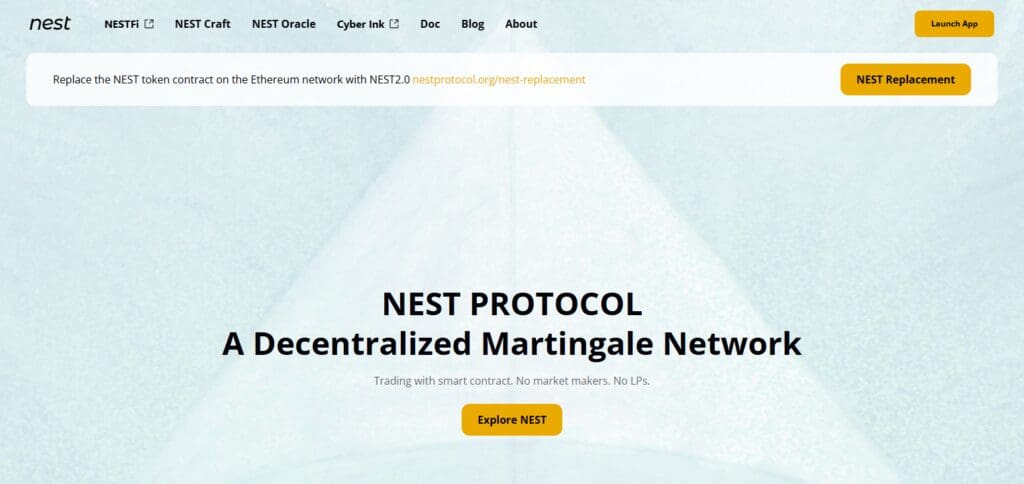
Such measure guarantees profit for users which points to open source principles of operation that outline contribution and guaranteed earnings.
The unique extendable and transparent structure of Nest Protocol gets the attention of all users focused on security.
On the other hand, staking does pose a barrier, especially for those that are not well versed in this type of capital and don’t wish to risk losing funds.
Nest Protocol
Pros
- Introduces a new consensus model with enhanced data accuracy.
- Open source and community based encouraging accountability.
- Secure through token staking for data verification.
Cons
- Some users may be turned off by staking requirements.
- Compared to others, they have less public usage.
9. iExec RLC
iExec is a marketplace for decentralized computing resources that connects Web2 businesses and the Web3 ecosystem. Referred to as the ‘AWS of DeFi’, iExec allows developers an opportunity to use its APIs to build oracles without any blockchain knowledge.
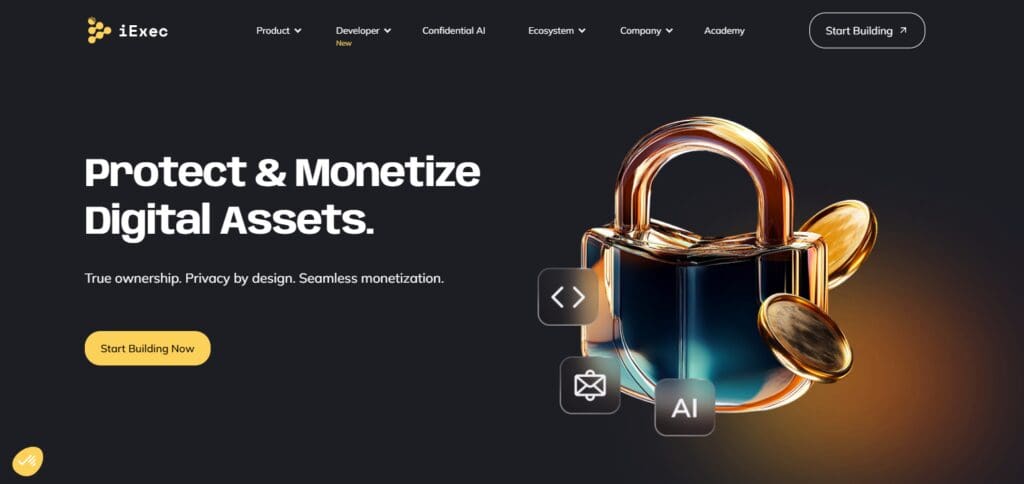
Users can also rent out their computing resources and get rewarded for it, all while having data privacy and control.
Especially from Legacy to Web3, iExec’s model is greatly accepted among developers. It is also very useful for supply chain and healthcare industries, but is hard to adopt for smaller-scale developers due to its complexity.
iExec RLC
Pros:
- Offers a marketplace for computing resources that enables browsing and buying.
- Integrates typical Web2 apps with Web3.
- Allows developers to create DApps that leverage compute resources as needed.
Cons:
- Complicated for minor developers with little understanding of the blockchain space.
- Competes against cloud-centric monopolies such as AWS and Google Cloud.
How to Choose The Right One
Selecting an oracle for your specific blockchain needs can mean the difference between the project’s success and failure. Here are a few things that you should take note of:
1.Cost Considerations
Unless you are trying to source a high-end IoT solution, most of these services will have some sort of subscription model attached. Evaluate the budget needed for integrating and maintaining the oracle. If you are tight on resources, choose barebones solutions that offer the base functionalities at low rates.
2. Industry- Specific Needs
Every oracle’s primary goal is to provide fully authentic, secure, and incorruptible information systems. Select oracles with the highest or near the highest reputation for accuracy as that is essential to placing trust in them.
3. Data Accuracy and Security
Security and accuracy are critical metrics for a blockchain developer. Always ensure that the oracle you choose provides cross platform interoperability.
4. Community and Developer Support
Having a well-integrated oracle across different platforms may sound promising, but it can get tedious as some networks are centralized and have limited application programming interfaces. Hence, ensure that the oracle offers expanded reach to make integration hassle free.
5. Blockchain Compatibility
Just as trust is important in any relationship, trust and efficiency must go hand in hand for blockchain projects. To help provide better integration and faster implementation, their communities need to actively participate in resolving problems and enhancing the oracles’ existing functionalities.
Take for instance, DeFi platforms may require a constant price feed to function optimally whereas supply chain solutions might integrate an IoT data bridge. If you select an oracle built for specific requirements, their overall performance and reliability increases.
Conclusion
Blockchain technology and the real world are intricately connected by Blockchain oracles, which are essential in guaranteeing the safety and precision of smart contracts.
The two we would recommend are Chainlink, who is reliable because of their immense partnerships, Pyth Network that is focused on providing exceptionally skilled financial information, Band Protocol as an industry leader in technology expansion and cross chain, and API3 that puts traditional APIs on the blockchain.
Universal Market Access (UMA) is also a leader in complex synthetic financial contracts, where as Tellor focuses on precision economics. Further DIA now offers multi chain data feeds which are customizable, and Nest Protocol increases the reliability of decentralized systems with the help of a new consensus mechanism.
Lastly, iExec RLC offers a decentralized marketplace for computing power, which is needed for the bridge between Web2 and Web3. All these oracles have been noted for numerous innovations which is why they’re essential to the blockchain ecosystem and why they should be followed as the industry changes.


